Recent Water Damage Posts
Signs that a Pipe in your House is Leaking
12/6/2022 (Permalink)
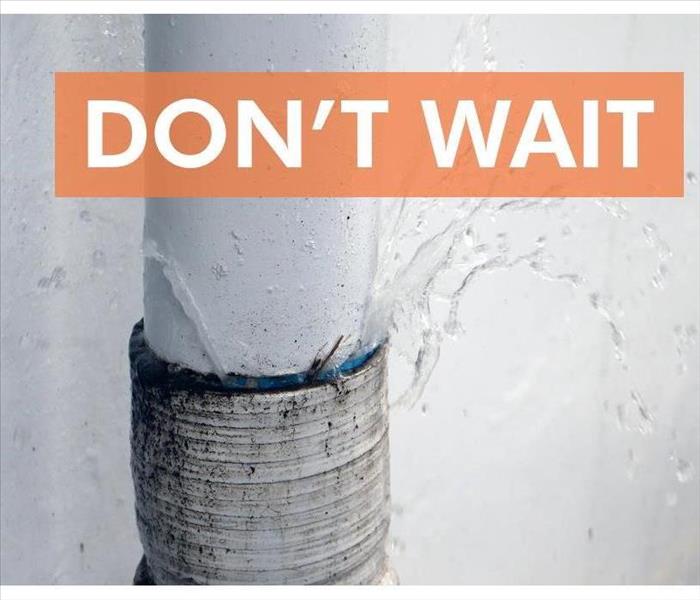 A leaking pipe can cause a variety of problems with your plumbing system.
A leaking pipe can cause a variety of problems with your plumbing system.
Signs that a Pipe in your House is Leaking
In most cases, a leaking pipe won't be something you can notice right away. The water that's coming into your home is probably leaking in invisible areas, so you'll only know there's a problem if there are obvious signs of leakage and flooding. That's why it's important to know the warning signs that a pipe in your house is leaking. Here are some ways to tell if you might have an issue.
1. Low water pressure
A leaking pipe can cause a variety of problems with your plumbing system. One of the most common is low water pressure. If you’ve noticed that your faucet isn’t working as well as it should, it may be time to call in a plumber to check for leaks in your pipes and fixtures.
2. Water stains on the walls and ceilings
Water stains on the walls and ceilings are a good indicator that there's a leak in your home. If you see water stains on the ceiling, check the attic for leaks. If you see water stains on the walls, check underneath them for cracks or other damage that could be causing the leak.
3. Soggy floors
Soggy floors are a definite sign of some kind of leakage. If you notice these signs, it’s important to call a plumber right away. The longer you wait, the more damage will be done to your home and belongings. If you’re not sure whether there is water damage in your house, look at the ceiling and walls for mold growth or discoloration. Mold spores can travel through air ducts, so if you smell mildew in several rooms this may be an indication that there is water damage somewhere in your house.
4. Mold and mildew growth
If you see mold or mildew growth in your home, it's a sign that water damage is occurring. If you see this type of growth in your house, contact a professional immediately.
5. Unpleasant odors
While the smell of mold and mildew may be unpleasant, it's not uncommon to notice an odor in your home or basement. In fact, you should expect your water pipes to have odor — but if you're getting strong smells from them that aren't normal, there might be a problem.
If you're experiencing a strong and strange smell coming from your water pipes, it's time to investigate further. The cause could be as simple as a backed-up drainpipe or toilet overflow, but if the odor persists for longer than it should or seems more intense than what would normally come with those events, then there may be something more serious going on. A leaky pipe can also cause unpleasant odors in other parts of your home: sewage is one example that comes up frequently in conversation about water leaks; decaying organic matter like dead plants or animal waste can also lead to an unpleasant scent emanating from below ground level.
6. Sounds of water running when no one is using it
If you hear water running in your house when no one is using it, then you might have a leaky pipe somewhere. Check faucets and toilets for leaks. You may also want to check the pipes that run through your walls as well as those that connect to appliances such as refrigerators and washing machines (these types of devices often have their own internal problems).
There are many signs that a pipe in your house is leaking, but the most important thing to remember is that it’s crucial to check for leaks before they become big problems. If you suspect a leak, contact a licensed plumber right away so they can come out and thoroughly inspect your home.
How Do You Prevent Water Damage?
11/1/2022 (Permalink)
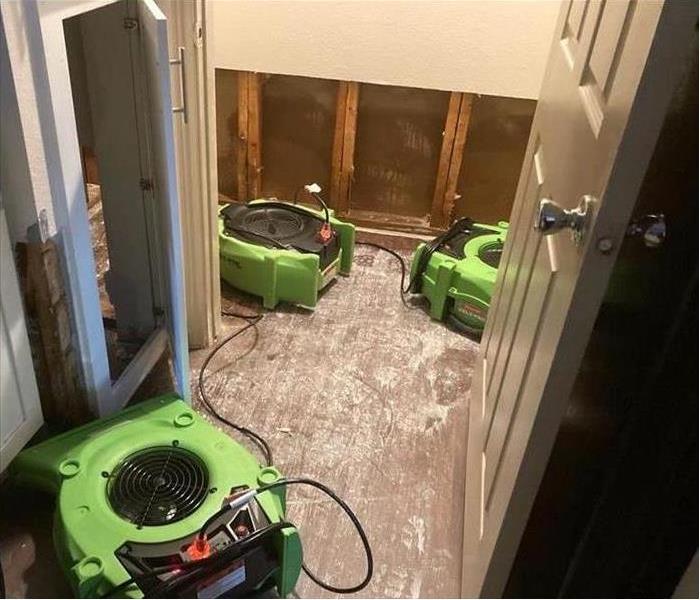 This Clear Lake home sustained significant damage as a result of standing water caused by a pipe burst.
This Clear Lake home sustained significant damage as a result of standing water caused by a pipe burst.
How Do You Prevent Water Damage?
Water damage can occur in your Clear Lake, TX building or home, and it can cause serious problems to the structural elements of your home. One of the most common causes of water damage is a burst pipe, which can be caused by several factors, including burst pipes, drips & leaks, pipe blockages, and other things. If you have a pipe burst in your home or business, it's highly likely that you're going to need to call a professional water restoration company to assess the damage and clean up the mess before it gets too bad. To prevent water damage from happening (and to prevent natural disasters), here are three tips to help keep water out of your home.
If you have any doubts about whether your property has been affected by a burst pipe then it’s best to get in touch with a professional plumber immediately as they will be able to inspect your appliances and repair any issues that may arise before any further damage occurs.
While it's tempting to try and fix the problem yourself, attempting to repair or replace a broken pipe can cause more harm than good (especially if you don't know what you're doing). If your house is experiencing flooding due to plumbing issues, call SERVPRO of Clear Lake at (281) 486-4716. We'll be happy to send someone out over as soon as possible so that we can begin assessing the damage and preventing further damage from occurring.
To prevent water damage from happening, here are three tips to help keep water out of your home.
- Make sure you have a backflow preventer.
- Install a water alarm.
- Check your pipes regularly to make sure they're in good condition.
Make sure you have good drainage systems installed on your property.
Without a proper drainage system in place, water can pool at the lowest point of your home or property. When this happens, it is more likely to seep into walls and floors.
To ensure that you have good drainage systems installed on your property, ask a professional contractor to come out and assess the drainage system. The contractor may recommend installing sump pumps or other types of pumps that can drain water away from your home.
When you are away from home for long periods of time, shut off the main water supply so that if there is a leak in one of your pipes, no damage will occur while you are gone.
Shutting off the main water supply is a crucial step in preventing water damage to your home. Each house has a main water shutoff valve, which is usually located near the meter. If you can't find it, check with your local water company or plumber for help.
To shut off the main supply of water:
- Turn off the main valve that supplies fresh drinking water to your house. This is typically located near your hot water heater. This will prevent any unexpected leaks into this part of your pipes from being swept away by running taps or toilets in other parts of your house that could cause serious damage.
Water damage can be a nightmare to deal with. It is not only time-consuming but expensive as well. So, before you call a professional restoration company to come out and assess your home or business after a burst pipe caused flooding indoors, make sure it's covered by insurance first!
How To Use an Auger To Unclog a Drain
8/27/2022 (Permalink)
 All you need is an auger, also known as a snake
All you need is an auger, also known as a snake
If a sink in your Nassau Bay, TX, home has stopped working, there may be something blocking your pipes. A clogged drain does not only affect the flow of water in your house, either. Over time, the clog could cause pressure to build up in the pipe. The pipe could then burst and flood your house.
To avoid the need for water damage restoration services, you should thus remove any clogs from your sink immediately. Luckily, all you need is an auger, also called a snake.
Auger Use
You can rent this plumbing tool for just a few dollars. Then, just follow the below steps to clear the drain.
1. Put the Auger Into the Drain
One end of the snake should go into the opening of the drain. Turn the handle on the drum to push the auger into the pipe. Keep going until you feel resistance from the clog.
2. Rotate the Snake
The auger's rotation should chop up the clog. If you do not feel the clog breaking up, try pulling the auger out of the clogged drain. The snake should take the clog with it.
3. Run the Water
Once you remove the snake, run the sink to make sure the clog is gone. If the clog did not come out of the pipe with the auger, it may just flush down the drain.
Clog Prevention
Now that you have cleared your drain, you should take steps to prevent the problem from happening again. Start by purchasing a strainer that collects foreign materials before they go down the drain.
You can also prevent kitchen sink clogs by properly utilizing your garbage disposal. Turn on the cold water while the disposal runs, and leave the water on for a minute after you shut off the disposal. This should flush the garbage into the main drainpipe rather than the smaller sink one.
Over time, a clogged sink could lead to a damaging pipe break. Therefore, should reduce the number of clogs in your sinks and use an auger to break up clogs that do develop.
Is a Restoration Company's Assistance Really Necessary? Here's When To Call for Help
3/7/2022 (Permalink)
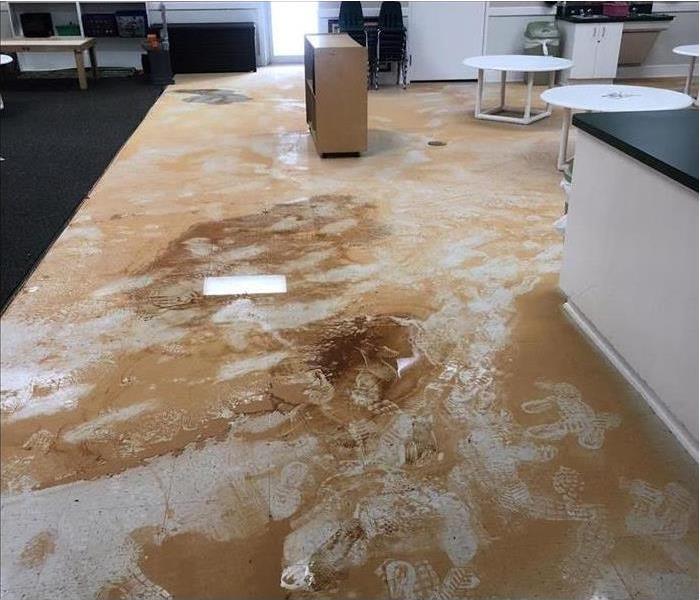 Contaminated water damage after a leak.
Contaminated water damage after a leak.
Pipe Burst Cleanup
A busted pipe is annoying. The water everywhere is a headache, but is it vital to call in a water restoration company to clean up the mess? Isn't a plumber just as effective? Your pipe burst cleanup is more severe than you may believe. If the primary damage (the pipe) is the only thing appropriately treated, the property could incur serious secondary issues. Call in the professionals when you experience the following conditions.
1. Saturation
A little puddle on the floor may not seem hazardous; however, the moisture has absorbed into the structure, and that is a serious concern. The dampness triggers bacterial and fungal growth, permitting increased contamination to the area. A sewer cleanup company in La Marque, TX, understands how to identify the extent of the infestation and assess air and materials, creating an appropriate action plan to remediate and sanitize.
2. Large-Scale Destruction
When the break happened, massive amounts of liquid entered, harming much of the space; therefore, your pipe burst cleanup most likely involves a significant overhaul to one or more rooms. It's not enough to wipe off the items. Specialists understand that the drenched porous object cannot be cleaned well with surface applications. Those pieces must be eliminated to reduce spore counts and efficiently restore the premises. A licensed crew follows IICRC procedures to safeguard the company from future growth.
3. Category Three Water Intrusion
While a plumber mends the broken pipe, he does not care for the surrounding deterioration. If the issue arose from a sewer line, that is troublesome. These lines house bacteria from food and feces. A remediation team looks beyond the initial cause to consider how to disinfect various water types. Antimicrobial sprays may be applied to nonporous valuables. In addition, the experts have an assortment of high-tech equipment to salvage electronics, documents and paintings.
Don't reach for towels and a mop to handle a pipe burst cleanup. Look into a professional service to methodically assess the conditions and effectively manage the business's property.
Prevent Frozen Pipes
2/25/2022 (Permalink)
 Water damage in a home due to burst pipe in Clear Lake, TX.
Water damage in a home due to burst pipe in Clear Lake, TX.
Prevent Frozen Pipes
Cold weather in Clear Lake, TX, can cause frozen pipes. It makes landlords and homeowners alike anxious every time the temperatures start to dip below freezing. However, there are steps you can take to lessen the likelihood you will need a water line repair.
Facts
Freezing pipes are not just a cold-climate problem. Homes located in warmer climates actually tend to be more vulnerable. This is because pipes are less likely to be properly insulated in these milder locales. When the weather does get cold, problems occur.
Frozen pipes cause many issues. Not only can they prevent water flow, but they can actually burst, causing water damage and potential flooding. Taking preventative precautions is the key to preventing such disasters.
Tips
There are some measures you can take to help keep your pipes from freezing:
- Keep the heat on.
- Leave cabinet doors open during cold weather.
- Wrap pipes in electrical heating tape.
- Add extra insulation to pipes located outside or in vulnerable areas.
- Allow faucets to drip slightly.
If you are leaving your home, keep the heat on while you are gone. You don’t have to leave it on high, but keeping it set above 50 degrees Fahrenheit is a good idea. Pipes are usually located in cabinets. By leaving these doors open, heat can more easily get to these areas. Applying heating tape directly to easily accessible pipes adds an extra layer of protection against the cold.
Some pipes need to be further protected with insulation to keep them from succumbing to the weather. Turning faucets onto a drip relieves pressure in the system. Frozen pipes actually cause pressure, which is why they may burst.
Dropping temperatures don’t have to make you a nervous wreck. Before the days and nights start getting unbearably cold, take the time to insulate your pipes and prepare for the winter months. Taking a few precautionary steps upfront can save you a lot of headaches later. If you are dealing with water damage from a plumbing leak, hire a professional water mitigation specialist to make sure your home is properly recovered.
Don’t Come Home to Water After Vacation
1/30/2022 (Permalink)
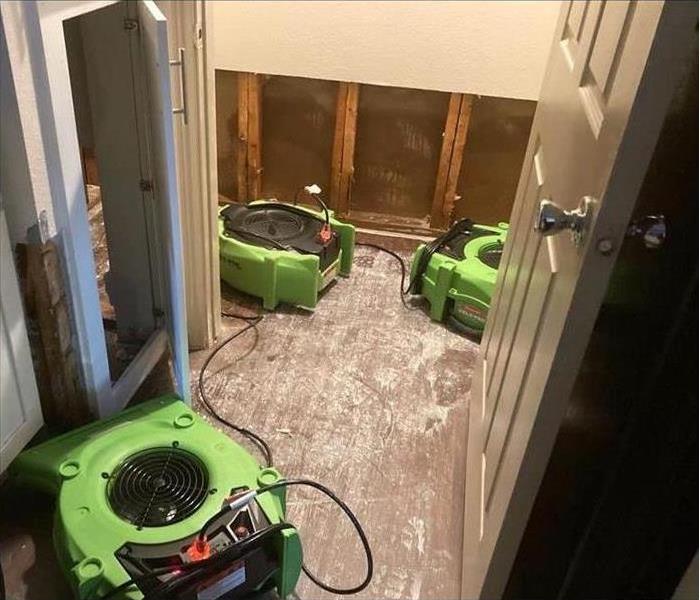 A pipe burst causes water damage to a home in La Marque, TX.
A pipe burst causes water damage to a home in La Marque, TX.
The last thing that should be on your mind when you’re on a vacation away from La Marque, TX, is whether a broken pipe has caused an area of your home to flood. This can cause damage to your belongings and your home, so the best thing to do is to prevent the need for water pipe repair.
Prevent Burst Pipes
Broken pipes can be difficult to fix, and the damage can be costly. It’s best to keep this issue from ever happening. If you’re traveling out of town for an extended period of time, specifically during the winter, there are several steps you can take to prevent your home from being flooded:
• Don’t turn down the heat too far. If you keep the heat on, even if you turn it lower than if you were home, it can keep your pipes warm enough to prevent them from freezing.
• Keep the water running. You don’t have to run the water on full. If you allow the faucet to drip, this helps relieve the pressure in your water system, possibly eliminating water pipe repair.
• Wrap the pipes. If you wrap pipes, especially those that are exposed, with towels or blankets, it provides extra insulation against the elements.
Keep an Eye on Your Home From a Distance
If you’re going to be gone for several days, especially during the coldest parts of winter, it’s not a bad idea to have a neighbor, family member or friend stop by the house once in a while. This can be just a quick peek inside to verify there is no flooding or a broken pipe, or checking the thermostat to make sure plenty of warm air is circulating in your empty home.
You can also use video cameras that you can view from your phone or computer to check on your home. This won’t prevent a pipe from bursting, but it can allow you to at least get a professional there to do a water pipe repair sooner and prevent further damage.
Does Filing an Insurance Claim Raise Your Rates?
12/20/2021 (Permalink)
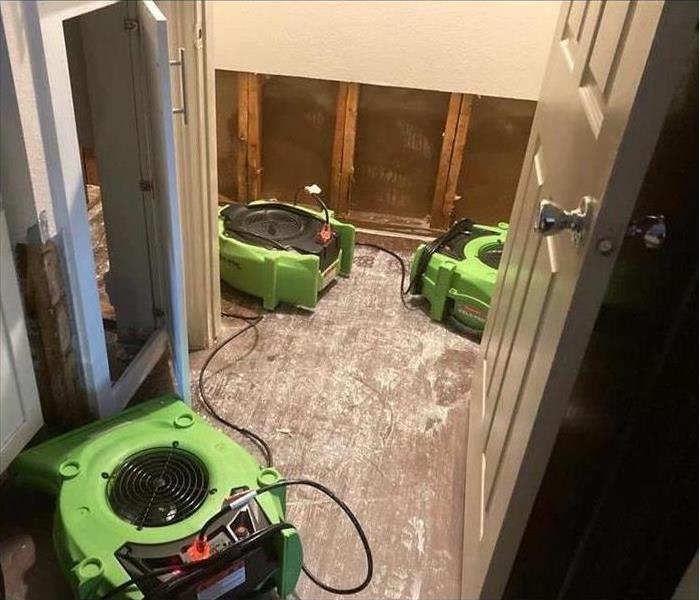 Water damage in a Nassau Bay, TX home.
Water damage in a Nassau Bay, TX home.
Does Filing an Insurance Claim Raise Your Rates?
Homeowners considering whether to file an insurance claim may be concerned about rate hikes. In general, filing claims is likely to result in higher rates. Find out more about why this is the case and a few possible exceptions.
Number of Claims
The number of claims a homeowner files will impact their insurance rates. It is usually the case that:
- The more claims that are filed, the higher the rates
- Some types of claims may result in higher rates or policy changes
- Too many claims may result in policy termination
A policyholder should consider whether filing an insurance claim for minor damage is worth raised rates or changes in coverage.
The Type of Claims
Rates will generally rise whether the losses claimed are partial or total. Factor in the following considerations:
- If the policyholder is at fault, rates are very likely to rise
- If the policyholder is not at fault, rates may or may not rise
- Some types of claims may raise rates and cause policy cancellation
Certain claims, including water damage or mold, may be more likely to result in significant rate hikes or policy changes. A separate flood insurance policy is necessary to cover a home flood.
The Insurance Provider
Some insurers are more forgiving of certain types of claims. Inquire about an insurer's rules regarding:
- Forgiveness or limitations
- Rate increases
- Reporting consultation for potential claims
A homeowner should be aware of policy terms and insurer practices. This information may increase the likelihood that coverage will offset damage cleanup and restoration costs.
A homeowner may want to set aside money in a savings account. Lower insurance rates by raising the deductible to match this amount. The homeowner can use these funds to cover minor damage instead of filing an insurance claim. If a residence sustains damage, obtain an estimate from a mitigation and restoration company in Nassau Bay, TX.
4 Things You Should Not Do After Water Damage Strikes
11/22/2021 (Permalink)
 After flooding, we often find sand and dirt along with the wet materials and contents.
After flooding, we often find sand and dirt along with the wet materials and contents.
4 Things You Should Not Do After Water Damage Strikes
Walking into an area in your home with flooding water from a broken pipe or backed-up sewer line can be overwhelming. As you try to prioritize all the questions running through your mind, it is important to consider how to address the damage promptly. The more you know about dealing with the problem, the better chance you have of addressing the issues quickly and efficiently, even while stressed. So, here are four things you should not do after water damage strikes your home in Clear Lake, TX.
1. Forget to call the insurance company. Your first instinct may be to call family and friends to help with the cleanup. But the standing water in home flooded areas can wait while you take pictures for the insurance company and make initial contact with your representative. The pictures are an important piece of evidence and can help prove the claim if there are questions raised by the adjustor.
2. Attempt to restore the area alone. Water that stands against walls, floors, and appliances can do unseen damage. That is why it is important to contact a professional cleanup crew to help restore the area after a broken pipe. The trained individuals know what to look for to prevent mold, water seepage, and further damage.
3. Miss the chance to inventory damaged items. Removing wet and ruined items from the flooding water and tossing them out the door may be the first thing you want to do, but don’t do it. It is critical to your insurance claim that you either photograph each item or make an inventory list.
4. Assume water is clean. All flood water is not created equally. There are three categories of water, and each has its own cleanup procedure. The categories are clean water, grey water, and black water. By contacting a team of professionals, you can be sure to address the contaminated flood water properly.
Water damage can be extremely disconcerting. When addressing a broken pipe or overflowing appliance, knowing what you should not do can be just as important as knowing what to do.v
Frosted Pipes: Thawing Water Lines to Prevent Flooding
9/28/2021 (Permalink)
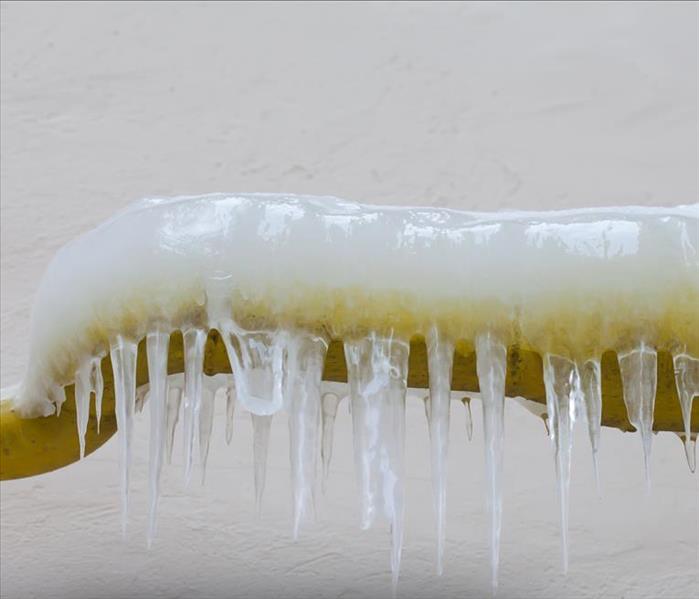 Frozen or freezing pipes can lead to increased flooding risk.
Frozen or freezing pipes can lead to increased flooding risk.
Water Lines Must Be Thawed to Prevent Flooding
If you go to work one winter day and find that the water pressure is lacking, then some of your pipes may be frozen. The steps below can help you locate and resolve this issue before a pipe bursts and causes potentially substantial flooding.
1. Locate the Pipe and Open the Faucet
If you have lost water pressure and suspect a frozen pipe, you should attempt to relieve pressure on the system. To ease the stress on the system, you can open the faucet nearest the pipe. It is essential to open the faucet because freezing builds pressure on an already pressurized system, which can result in an early spring flood. The pipe will likely be near the disrupted faucet.
2. Thaw Externally Located Pipes Like This
If the pipe is located on the outside of the building or in a crawlspace below the building, you can use a hair dryer, heat lamp, heat tape, or portable heater to resolve the issue. It is not wise to use an open flame or torch as either of these can weaken or damage the integrity of the pipe, leading to breaks and flooding.
3. Thaw Internally Located Pipes Like This
If the pipe is located in the ceiling or behind interior walls, then you can crank up the thermostat, use an infrared heater, or cut out the wallboard and heat the pipe as though it were outside. Typically, a frozen pipe will not occur too deep inside of a building.
4. Admit Defeat or Celebrate
If you cannot find the frozen pipes, but you strongly suspect freezing to be the culprit of reduced water pressure, then you may want to consult an expert in the Nassau Bay, TX, area because they will likely have access to thermal cameras and other specialized equipment that can help narrow down and speed up the search.
Frozen or freezing pipes can lead to increased flooding risk because of the heightened pressure on the system. If you suspect the pipes in your building may be frozen, you can follow the above steps to minimize any potential damage.
What Do I Do After a Pipe Break?
7/7/2021 (Permalink)
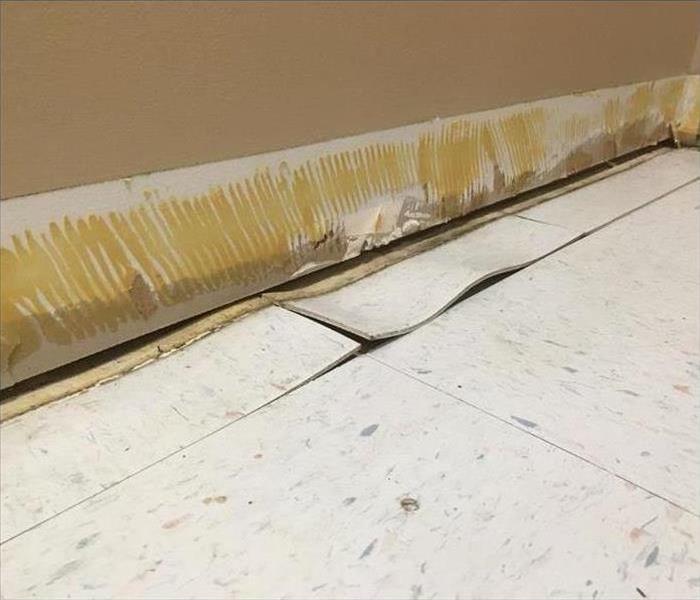 Water damaged flooring and baseboard.
Water damaged flooring and baseboard.
Ways To Avoid Further Damages
When you're dealing with bursting pipes, a visit from water damage professionals is one of the best things you can do to prevent mold growth and secondary damage. While you wait for that Clear Lake, TX, expert to arrive, there are some steps you can take to avoid further damages.
1. Turn Off the Water
The first step is to stop water from flowing into your home. As soon as you discover the leak, turn off the main water supply to the home. This way you don't have to try to figure out where the water is coming from or mess with water pressure. Make sure that all your family members know where the main water shut-off is because you may not always be home to take care of bursting pipes yourself.
2. Drain the Pipes
After shutting down the water to your home, open up your faucets with the cold-water knob. Flush each toilet once or twice to drain water from the pipes. Turn off the hot water heater and then use the hot water knob to flush hot water from the pipes. By now, the leak should have stopped.
3. Look for the Broken Pipe
Even if you don't have the tools or experience necessary to fix the broken pipe, you'll save a lot of time by locating the source of the trouble. A break in a major water line will be more expensive and take longer to repair than pipes under sinks, for example.
4. Remove Water
The longer water from bursting pipes is allowed to sit, the more serious water damage will become. Mop up as much as you can and use a wet/dry vacuum to get all water cleaned up. If the water has had time to seep into any building materials or furnishings, you may need to contact a Clear Lake, TX, professional for cleanup services.
How To Identify the Types of Water Losses
3/8/2021 (Permalink)
 There are three water categories.
There are three water categories.
Not every water damage is the same. Minor spills involving clean water can be handled by a homeowner. Black water, however, is quite dangerous and should only be touched by a trained expert. It thus helps to know the different categories and classes of water losses. This can help you decide when to call emergency cleanup professionals.
Water Categories
1. Category 1
Category 1 water is the cleanest. It does not contain any bacteria or other contaminants that could harm humans. Category 1 water losses typically involve an overflowing sink or a broken supply line.
2. Category 2
Category 2 water, or grey water, may contain some physical, chemical, or biological contaminants that can cause sickness in humans. The water could come from toilet bowls with urine, dishwashers, or washing machines.
3. Category 3
This is also known as black water. It contains fungi and bacteria that can be dangerous. The fluid typically comes from storm surges, rivers, or streams. Water in this category should only be handled by sewage cleanup experts.
Water Classes
Water losses are also classified by the extent of the damage. Class 1 losses affect a small area and occur when the water has not greatly absorbed into nearby materials. Class 2 losses, meanwhile, may spread to the walls, carpets, and cushions.
Class 3 and 4 losses are the most severe. Class 3 losses affect an entire room, including the ceilings and insulation. Class 4 losses involve low porous materials such as concrete and hardwood. They thus require special drying techniques.
Overflowing water from a sink or tub that is contained to one section of your Clear Lake, TX, house can be handled pretty easily. Unsanitary black water, however, can be harmful and tougher to remove. This is especially true if the water has spread to hardwood floors or a large area of your home. If you suffer a Category 3 or a Class 3/4 water loss, you should thus call restoration experts.
4 Tips for Drying Out a Commercial Building
2/9/2021 (Permalink)
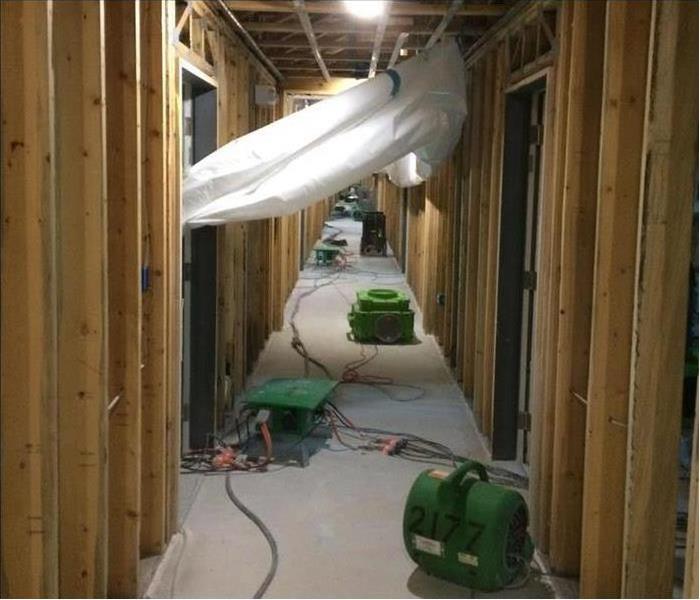 Drying equipment in a Dickson, TX commercial building.
Drying equipment in a Dickson, TX commercial building.
Water Damage Tips
When your Dickson, TX, commercial building suffers water incursion, whether it's from a pipe burst or act of nature, the same basic steps will have to be taken. These steps will help protect any occupants in the affected area and the building and its contents. Professionals will probably have to be called in to remedy the situation thoroughly. Still, you can follow water damage tips to begin drying out the building before help arrives. After all, the quicker drying begins, the less damage will occur.
1. Turn Off Electricity
If you can safely make your way to the breaker box, the power to the area should be turned off immediately. Never walk through standing water in which electrical items are sitting. The electricity can travel throughout the water, electrocuting you. If you can't navigate to the breaker safely, or if you're unsure, you must wait for a professional to cut the power supply.
2. Extract Standing Water
Next, all the standing water will need to be extracted. A wet/dry vacuum is excellent for doing this safely and efficiently. It will also remove smaller debris.
3. Remove Soaked Materials
After you've extracted as much water as possible, one of the most critical damage tips to follow is to remove as many wet materials as possible. This can even include drywall and flooring. Soaked carpet and padding typically aren't salvageable; it can't be dried entirely before mold growth occurs (within 24 to 48 hours). Water damage remediation experts are highly recommended, as they can bring in industrial-grade equipment.
4. Dry Remaining Contents
You can try to dry the remaining contents by opening windows and doors if the outside is less humid than inside, using dehumidifiers, running fans and turning up the heat via the HVAC system or space heaters.
If your building floods, it and its contents need to be thoroughly dried as soon as possible. These are a few damage tips and cleaning tips you can begin before professionals arrive on the scene.
How To Make an Insurance Claim After Water Damage
11/30/2020 (Permalink)
 Filing an insurance claim doesn’t have to add stress to a water disaster
Filing an insurance claim doesn’t have to add stress to a water disaster
How To Make an Insurance Claim After Water Damage
Making an insurance claim after water damage in your home is an important step to restoring your property in Dickson, TX. Each homeowner’s policy differs, but making a claim is similar for most people. Familiarizing yourself with this process beforehand will help you feel confident should the time come to activate your policy. It’s always better to be prepared, so if it’s been some time since you reviewed your coverage, make it a priority before every storm season.
Check Your Policy
Understanding your policy is key to getting back on your feet quickly. If possible, check your policy or ask your agent about these items before a water disaster or flood occurs:
- The amount of your deductible
- What kind of damage is covered
- Expenses that are eligible for reimbursement
- The paperwork required to file an insurance claim
- Whether security or restoration services are covered
- The preferred service providers for cleanup
- The availability of temporary relocation housing
In addition, keeping the receipts from any related expenses is vital. Make digital copies of these and then put them in a safe place for your agent to access later.
Document the Damage
If damage has already happened from a pipe burst or other leak, it’s important to make documentation as soon as it's safe to do so. After calling your insurance agent, make sure to take photos and make a written list of the affected items. Videos are another important tool that an insurance adjuster can use to assess losses. Your water damage restoration specialist may need to make temporary safety precautions to protect your home from weather, theft or animals; having thorough documentation is vital so that the adjuster can see the original state of the flood damage.
Filing an insurance claim doesn’t have to add stress to a water disaster. By checking your policy, making documentation and following your agent’s advice, you’ll be on your way back to normal in no time.
How To Clean Up After a Water Heater Leak
10/12/2020 (Permalink)
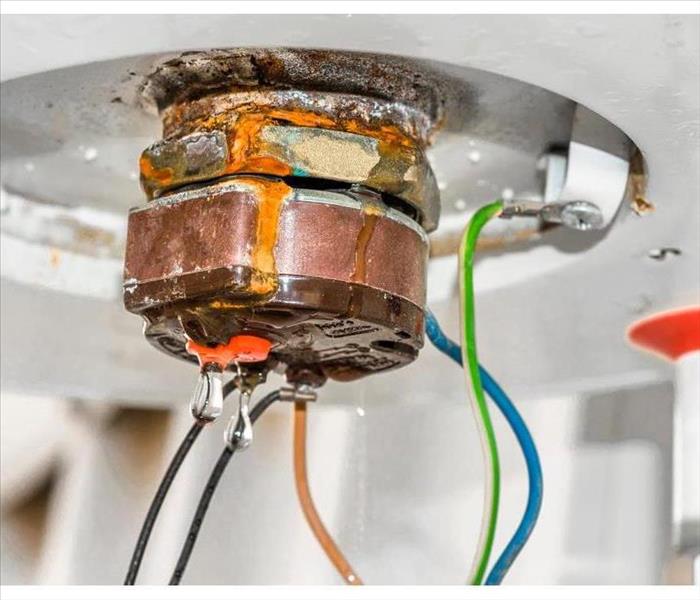 A leaking water heater is an urgent matter and needs to be dealt with immediately
A leaking water heater is an urgent matter and needs to be dealt with immediately
Actions To Mitigate Damage From a Leaking Water Heater
A leaking water heater is an urgent matter and needs to be dealt with immediately. The greater the water heater capacity, the greater the potential for significant damage. Homeowners in La Marque, TX, should follow these steps to keep water damage from a failed water heater to a minimum:
- Close the cold water inlet valve on the water heater to stop the incoming flow of water.
- Clear flooded floor surfaces of loose, valuable, or potentially hazardous items.
- Remove standing water with towels, mops, squeegees or wet/dry vacuums.
- Wipe down any damp elevated surfaces.
Cleaning Up After a Broken Water Heater
Keep in mind that water will travel to the lowest point it can reach. Be sure to check for pooled water under and behind appliances, beneath boxes and furniture, and in corners.
You may also want to drain your water heater by attaching a garden hose to the drain spigot at the bottom of the water heater tank to channel any remaining water out and away from your home.
To the extent possible, minimize the severity of water damage before your leaking water heater completely fails. If the water heater is located in the garage, keep off of the floor any items that may not be able to withstand flooding, such as cardboard boxes, power tools, keepsakes, seasonal decorations, etc. Inside your home, take similar precautions with articles of value, sensitive electronic equipment, food containers, clothing and important documents.
Getting Professional Help
Water heater failures often happen immediately and with dramatic effect. Depending on the severity of the problem, it may be necessary to call a reputable water damage and restoration company to restore your property to the condition it was in before the flood occurred.
Actions to mitigate damage from a leaking water heater should be taken before and must be taken after a flood occurs. Following these steps can help you keep the impact of a broken water heater to a minimum.
How To Protect Your Business From a Toilet Flood
8/15/2020 (Permalink)
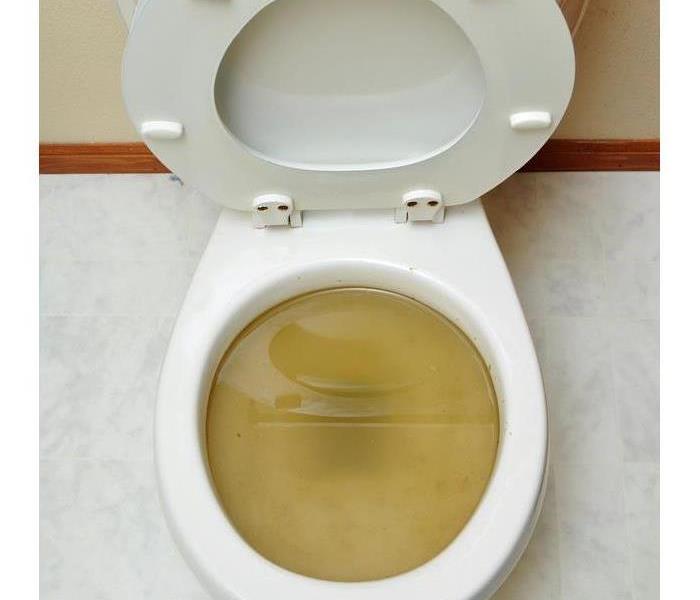 Toilet overrflow in La Marque, TX
Toilet overrflow in La Marque, TX
Prevent Potential Contamination From A Toilet Flood
You may occasionally deal with toilet overflow in the bathroom of your La Marque, TX, business. This problem may be due to
- Clogged pipes
- Clogged vents
- Blocked sewage lines
- Failed septic system
A toilet flood is a common occurrence, but by following these steps you can prevent potential contamination and ensure the well-being of your customers and your employees.
Turn Off the Value and Don't Flush
When an automatic flush toilet overflows, it is necessary to stop the emission of water by turning off the water valve as quickly as possible. This step is critical because water will continue to flow with each flush. Turning off the water will prevent extensive flooding.
Manual flush toilets will not flush if you do not press a lever. If the overflow is due to a clog, you can more easily prevent flooding when your toilet flushes manually than when it flushes automatically.
Clean Up
Clean up after a manual or automatic flush toilet flood can vary, depending upon what caused the flood. For example, a simple clog within a manual flush toilet may involve little more than a mop and bucket to wipe up water splashes. However, floods due to a septic tank or sewage line failure, require measures to prevent bacterial and other toxic contamination. A professional cleaning service can extract waste-containing toxic water, disinfect surfaces, purify the air and help prevent the development of mold.
Prevent
When a toilet overflow causes extensive flooding, the damages can be devastating to your business. A toilet flood could require you to close your premises and replace furnishings and equipment, which could lead to financial loss. Scheduling regular inspections of all building plumbing, fixtures, and sewage systems will alert you to any issues before they turn into disasters.
You may not be able to stop a toilet from flooding your La Marque, TX, business, but you can establish a plan to minimize potential damages.
Water Damage Doesn’t Always Mean Ruined Possessions
5/22/2020 (Permalink)
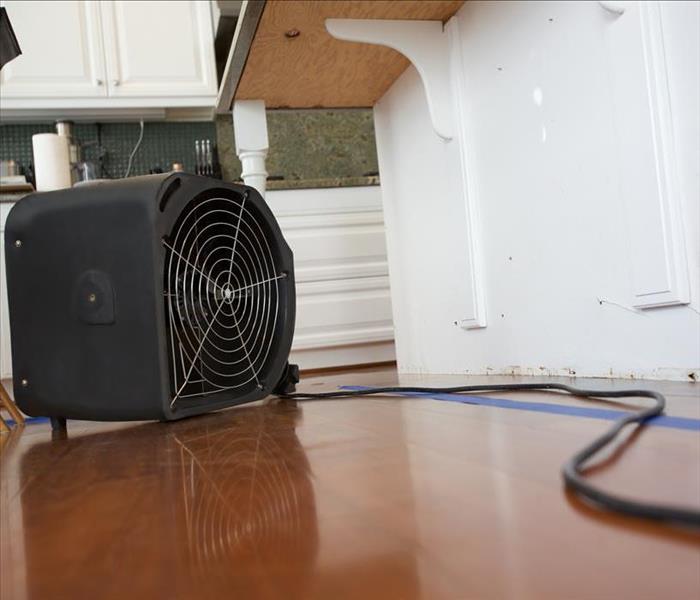 Take quick action to begin the drying process
Take quick action to begin the drying process
Discovering water at home is something no homeowner wants to experience. Along with dealing with the water itself, it can ruin belongings and create the ideal conditions for mold growth. Whether a broken pipe or malfunctioning appliance caused the issue, it can seem overwhelming and a hopeless endeavor salvaging items.
Cleaning Tips
While some items may not be saved, a surprising number of your treasures may be salvageable. From furniture to artwork and electronics, quick action may limit the damage.
Remove items from the affected area as quickly as possible.
For items that are still wet, rinse them off and gently wipe down with a damp cloth.
While furniture, rugs, and similar items can be taken outdoors to dry, some objects may be affected by the sunlight. If possible, let those items dry inside the home.
Use fans, air conditioners, and dehumidifiers to eliminate moisture. If the humidity outdoors is at an acceptable level, open windows.
Fragile paper-related items and artwork must be gently handled. For artwork, open the frame to let air in. Photographs stuck together should be lightly soaked to naturally separate and laid flat to dry.
Metal items should be cleaned and dried to avoid rust forming.
Organic materials are prone to mold. Any textiles and leathers should be dried as soon as possible.
Professional Help
If there has been an extensive amount of water loss, handling it on your own can involve a significant amount of time and resources that would be better spent elsewhere. A professional water remediation and restoration expert not only has the tools to clean up the water mess and eliminate the chances of mold growth, but they also have the tools and know-how to clean most items in the home. Along with dry cleaning services, they also have methods that include wet, foam, abrasive, and immersion cleaning processes.
While no one wants water in their Dickson, TX, home, it doesn’t have to mean replacing your belongings are losing precious treasures. Take quick action to begin the drying process can do wonders for your water loss.
Why You Should Hire a Certified Water Damage Expert
5/6/2020 (Permalink)
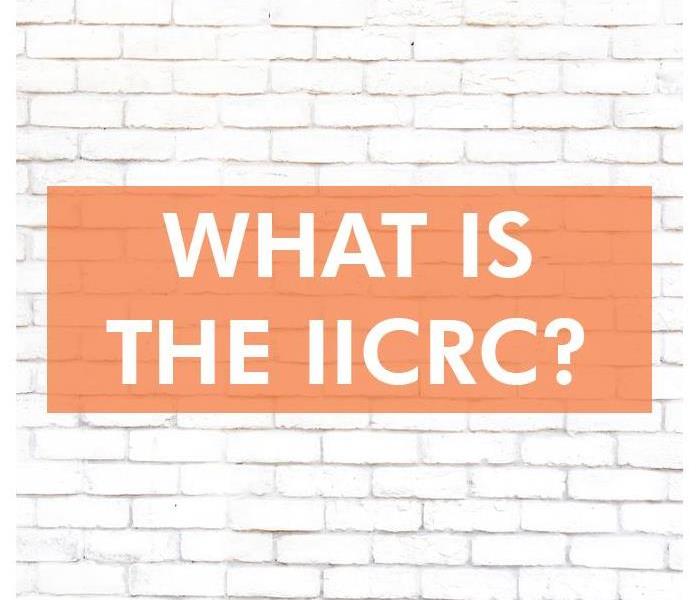 The IICRC It's a non-profit certification body for the restoration industry founded in 1972
The IICRC It's a non-profit certification body for the restoration industry founded in 1972
Many things can cause a broken pipe. Some of the most common causes in La Marque, TX, include tree roots, corrosion, and broken joints. When pipes burst, your property is at risk of structural damage and bacterial growth if water clean up doesn't happen immediately.
Calling a clean up and restoration company will be necessary for your property's structural integrity and the safety of all occupants. Make sure the company you hire employs IICRC technicians who are trained and certified for this type of work.
What is IICRC?
IICRC stands for Institute of Inspection Cleaning and Restoration Certification. The IICRC is the body of experts who set standards for the cleanup and restoration industry. Professionals with this certification learn the best practices of the trade, including mitigation practices, hazardous waste clean up, and commercial drying techniques.
Why Hire an IICRC Specialist?
The professionals who are certified by the IICRC are trained to put your best interests into their work. This means making the health and safety of your business's occupants a priority while also restoring your facility to a pre-disaster state. During the water clean up process, the IICRC specialist will save what is salvageable and remove any mold, bacteria, and other hazards to health that could be a threat to your employees and clients.
Following cleanup, a commercial drying specialist will inspect the structure and make plans for the best way to ensure your building dries to a safe indoor environment. The drying specialist has been trained in complex commercial structures, technology, and techniques for various building materials and equipment.
Hiring a worker without certification could pose a liability risk to your business. If the property is not disinfected and dried correctly, mold and sewage could remain and dangers could present long after clean up has occurred.
When disaster happens, put the safety of your team first. Only hire skilled and certified technicians who have been trained in best practices. When you do, you will always have the best outcome.
Tips for Dealing with Water Damage
2/17/2020 (Permalink)
 Shut off the water source
Shut off the water source
Tips to Help Contain Water Damage
Water damage should never be taken lightly. Even if your home in Dickson, TX, experiences a minor water leak from a leaky faucet or broken pipes, water has a way of sneakily spreading into walls, floors, and other hidden areas. To ensure the damage doesn’t spread, trust a water damage expert to get your home back to new. While you wait for help to arrive, below are a few tips to help contain the damage.
1. Shut Off the Water Source and Electricity
Safety should always come first. If the water is coming from piping, turning off the main water source is imperative since mold can begin forming within hours. Depending on where the damage occurs, turn off the electricity.
2. Check for Mold and Mildew
A main issue resulting from water damage is the growth of mildew and mold. These spores quickly grow and spread, even to areas in the home that aren’t affected by the water. If left unchecked, it can create more serious issues down the road.
3. Eradicate the Moisture
Water cleanup is an essential part of getting your home back to normal. Along with removing excess water, use fans and dehumidifiers to circulate the air and assist with evaporation.
4. Remove Affected Porous Materials
Water can shrink and warp porous materials. Any carpeting, insulation, fabrics, paper and other items should be removed from the area. Along with helping the damaged area dry out, removing these items could potentially save them from having to be tossed.
5. Disinfect
Once items have been removed and the damaged area is dry, it’s time for some deep cleaning. Any hard surfaces that were touched by water should be disinfected. This will help reduce the chances of mold spreading.
Dealing with water damage is not a fun job, but not addressing it will make it a much bigger job. While these steps can help reduce the spread of damage, calling a professional can make it “Like it never even happened.”
Avoid Flooding After the Thaw
1/27/2020 (Permalink)
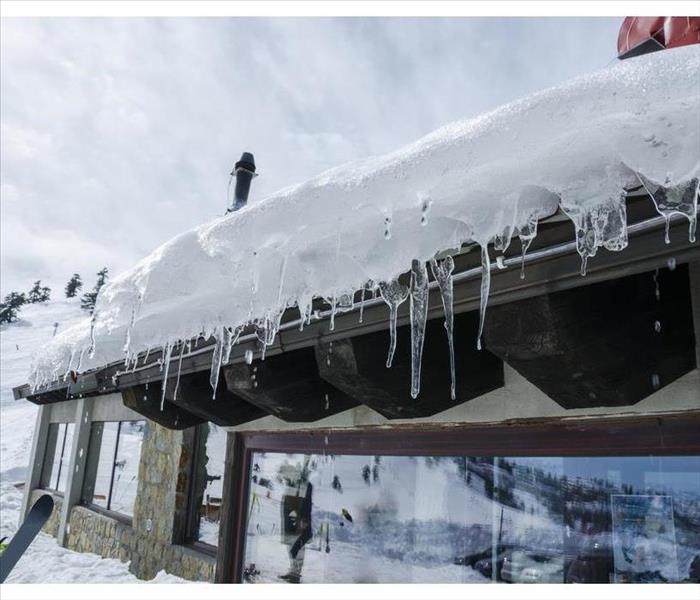 A backed-up gutter or downspout is one of the main culprits for flooding
A backed-up gutter or downspout is one of the main culprits for flooding
Spring may be a welcome sight after a long cold, snowy weather, but it can come with a few downsides. Staying on top of maintenance for your La Marque,TX, business can reduce the impact warmer temperatures can create. While seeing the snowmelt can be a relief, it may mean dealing with flooding. While the weather doesn’t always ensure a spring flood won’t happen, investing time in preparing for the worst can reduce the chances of needing a water remediation expert to eliminate water damage.
Winter Maintenance
A frozen pipe, clogged gutters, and other factors can be an invitation for damage. Below are a few maintenance tips to help your business usher in spring smoothly.
When it snows, be sure to shovel it away from the foundation. This will help it drain away from your business instead of flooding in.
Inspect floor and roof drains for any debris to ensure water will flow properly.
Regularly check and clean gutters and downspouts. A backed-up gutter or downspout is one of the main culprits for flooding. If possible, remove ice and snow to further help flow.
Check the foundation for any cracks. They should be repaired as quickly as possible to avoid further damage that could affect its structural stability.
Extra Protection for Flood-Prone Buildings
Some businesses may deal with water issues more regularly than others, especially after a wet winter. Along with regular maintenance, there are a few other ways to gain peace of mind. If your business has a basement, keep items stored in it elevated for added protection. The faster you can address a water issue the easier it is to clean up. There are water alarms and flood sensors available that provide alerts when water is detected. Businesses may also want to consider talking with their insurance company about adding flood insurance to the policy.
Unfortunately, flooding isn’t always avoidable. Taking extra precautions before the thaw can reduce the chances of a major crisis.
3 Signs You Need To Replace Your Toilet
12/11/2019 (Permalink)
 Toilet replacement in Nassau Bay,TX
Toilet replacement in Nassau Bay,TX
3 Signs You Need To Replace Your Toilet
A toilet that isn’t in optimal shape can have a difficult time doing its job efficiently. While certain problems can be fixed with a routine toilet repair, others may warrant a full replacement. Replacing your leaking toilet instead of opting for a quick fix can help you save valuable time, money and energy. If you’re having trouble determining whether the toilet in your Nassau Bay,TX, home has reached the end of its lifespan, these common signs of a failing toilet can help you make the right decision.
Frequent Clogging
While there’s nothing wrong with a toilet that becomes clogged occasionally, frequent clogs may point to an underlying issue. Most of the time, a toilet that experiences ongoing clogs contains worn-out parts that are preventing it from handling its contents properly. Another potential explanation is that there is a certain type of blockage in the plumbing system that is causing the toilet to clog. If the situation is serious enough, it may be easiest to replace the fixture completely.
Constant Running or Flushing
If your toilet seems to be continuously running or flushing, this may be a sign that you have a leaking toilet. This can usually be solved by simply adjusting the flapper valve. However, an ongoing problem usually signals that it’s time for a new toilet. Keep in mind that a constantly running toilet wastes a significant amount of water, so be sure to replace it with a new one promptly.
Age
In some cases, your toilet may simply be too old to continue functioning at its best. Toilets can usually last up to fifty years or more, but if you’re experiencing persistent issues, the best decision is to replace your old toilet. Many new toilet models are more energy-efficient, which can help you save money as well as avoid additional problems later on.
An old or leaking toilet can cause various types of harm in your living space. Whether you’re experiencing flooding or water damage, residential restoration services can salvage your home in no time.
5 Water Damage Prevention Tips
10/16/2019 (Permalink)
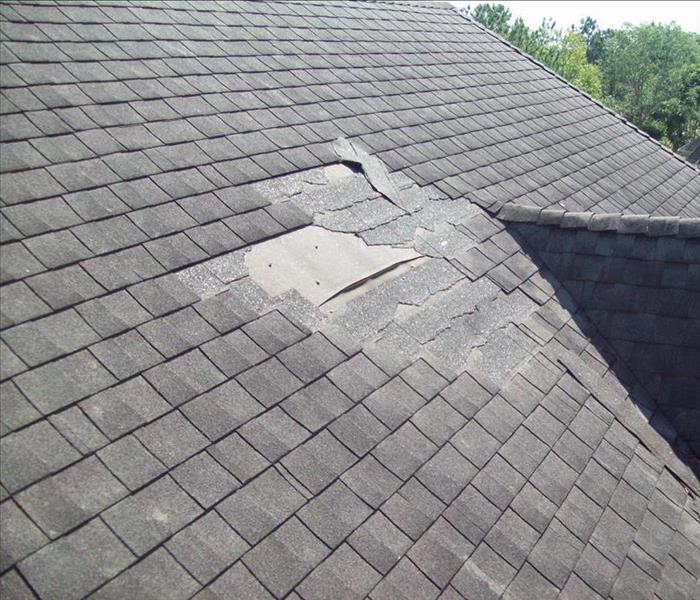 Missing shingles in a roof
Missing shingles in a roof
5 Water Damage Prevention Tips
Flood prevention in Nassau Bay,TX, can be an important step towards maintaining your home. Here are five steps you can use to protect against water in home cause damaged.
1. Fix Water Problems Quickly
If you do find water related problems in your home it's best to contact a water damage restoration service as quickly as possible. Not only can these professionals perform a pipe cleanup, among other restoration services, but they can take care of the damage quickly and restore your home back to working order, which can help prevent long-term damage as well.
2. Regularly Inspect At Risk Areas
It's also a good idea to regularly inspect any at risk areas including old plumbing where a broken pipe may occur, and appliances that utilize water such as a washing machine or refrigeration units. Doing so may allow you to catch potential problems before flooding occurs.
3. Look the Roof Over After Storms
Another way to help avoid damage from water in home, is to look over your roof after any major storms. This may allow you to find areas of missing shingles or other storm damage that can lead to potential leaks.
4. Slope Landscaping Away from the Home
You may also want to consider ensuring that any landscaping is sloped away from the home. This will drain storm water away from the house instead of allowing it to pool against the foundation. Also consider positioning any drainage to direct water away from the house as well.
5. Keep Drainage and Gutters Debris Free
Another important step for protecting your home against potential water damage is to keep any gutters or drainage systems clear of debris. Doing so can help prevent water backup or overflow into the home.
If you experience water in home damage, it's best to have the problem fixed as quickly as possible. You should also regularly inspect at risk areas so you can catch any potential problems before they occur. Also consider prevention methods such as sloping the landscaping away from the house, and cleaning any debris out of your gutters.
Noisy Pipes Are Trying to Tell You Something
9/25/2019 (Permalink)
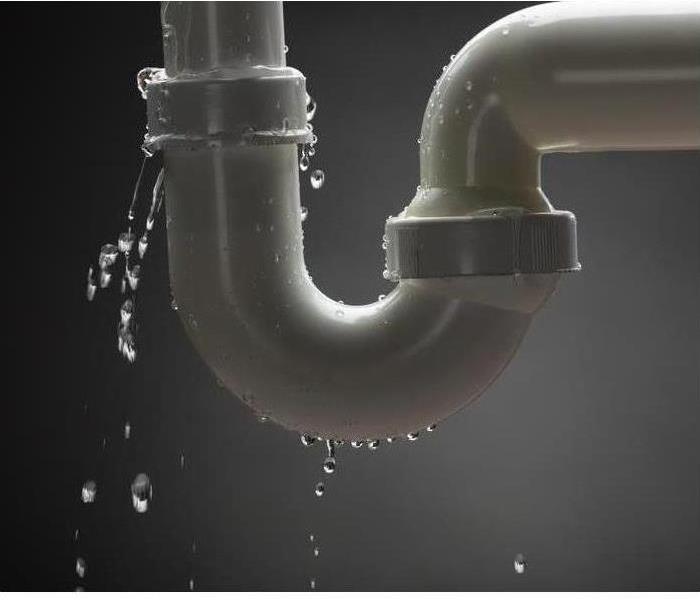 While they may not speak our language, pipe noise should be treated as a warning call and evaluated.
While they may not speak our language, pipe noise should be treated as a warning call and evaluated.
A noisy pipe is more than just a nuisance. It could be a sign of potential problems that could lead to a pipe break. Here are three typical reasons pipes are making a raucous in your otherwise peaceful home in Clear Lake, TX.
1. Rattling Often Means Hammering
Despite its name, water hammering is not someone hitting your water pipes with a hammer. Pipes are designed with a chamber of air to prevent the force of the water’s flow from shaking the pipe when it is stopped.
Chattering, called water hammering, occurs after extended air loss in the pipe’s chamber. The cushion of the air becomes so small that the water’s force isn’t counteracted and shakes the pipe. It can be dangerous and lead to a pipe burst due to uneased force.
2. Hot Copper Causes Expanding
If your home is equipped with copper pipes, you may hear noises when using hot water. Copper absorbs heat and changes size. As water moves through, the copper expands and bumps it against other parts of your home the pipe wasn’t touching in its unexpanded state.
While hot copper is a source of noise, it will often not lead to a pipe break. It can be mitigated by reducing hot water temperature and requires extensive plumbing remodeling to treat the noise otherwise. Copper is doing what it naturally does and contracts back down to its regular size once it cools off.
3. Water Pressure Pressuring Your Pipes
If water pressure is not adequately regulated, water usage may cause very loud pipes. This may be especially noticeable in water-using utilities such as a dishwasher or washing machine misbehaving. Checking the water pressure and ensuring a functional water regulator is installed should stop the noise and prevent the need to potentially fix broken pipe.
While they may not speak our language, pipe noise should be treated as a warning call and evaluated. If the pipe bursts before it can receive repairs, it is worth locating a professional water removal and restoration service.
Visit http://www.SERVPROclearlake.com/ for more information on water damage.
Funding Flood Damage Restoration
9/13/2019 (Permalink)
 Flood damage in Nassau Bay, TX
Flood damage in Nassau Bay, TX
Flooding of your Nassau Bay,TX, home can be a frightening prospect. Fortunately, many people living in a flood plain already have flood insurance. Additionally, the Federal Emergency Management Association (FEMA) may be able to help those who are uninsured or underinsured.
Who Can Apply for Disaster Aid
Anyone living in a federally-declared disaster area can apply for assistance, regardless of insurance coverage or personal income. Even if you have already begun repairing your property, you can still apply for reimbursement funds. However, the funds must be used for one or more of the following purposes:
- Property restoration
- Disaster-related medical and funeral expenses
- Temporary housing
- Other disaster-related expenses
How To Apply for Disaster Aid
You can apply for federal disaster assistance either online or by phone. If you have flood insurance, make sure to call your agent first. After your application has been processed, a FEMA inspector will come out to your property. The inspectors will not be able to tell you if you qualify or not. You will receive a letter stating whether or not you were approved. If you are approved, the letter will detail the ways in which you can use the money.
In many cases, it may not be feasible to wait on the inspector to arrive before you begin making repairs. Always make sure to take photo or video evidence of the damage before you clean or repair anything. This visual evidence will help both FEMA and your insurance company determine how much money you qualify for.
Options for Those Denied Federal Grants
If you do not qualify for a federal grant, or if you need more assistance, you can apply for a low-interest loan with the Small Business Administration. Additionally, you may reach out to the American Red Cross for help.
Flood damage is a hassle; luckily, there are many ways to fund necessary repairs. Whether you are using funds from a grant, loan, flood insurance or personal savings, a professional restoration team can help you get your home back to normal quickly and safely.
Flood Water vs. Building Materials
9/3/2019 (Permalink)
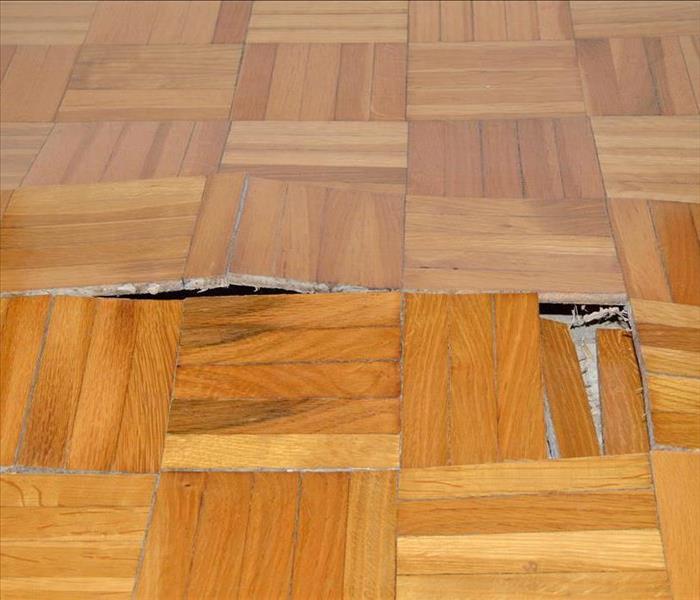 Damaged wooden floor in a Dickson, TX home
Damaged wooden floor in a Dickson, TX home
What Can Be Saved After Water Damage In Your Home?
When water floods your home one of the first questions you may have is what can be saved? To answer this question, it's helpful to know what happens to the materials in your home when they get wet. Swelling wood, stained fixtures, and damaged carpet are just a few of the things you can expect to find. Professional cleaners and restoration specialists can help you salvage and reclaim much of your home.
Flooring
Soaked carpets and carpet pads can be cleaned. Wood floors can often be dried and re-laid. If you have significant swelling wood, however, particularly in the subflooring, you may need to replace those sections. Tile flooring tends to survive flooding well and can usually be reused.
Cabinetry
If you had a supply line break in the kitchen, your cabinets probably took a hit. As cabinets tend to be a mixture of particle board, MDF, or plywood, they will have to be replaced. These water-absorbent materials are weakened in a flood. If you have solid wood cabinetry, it can be dried and saved.
Walls
Drywall is another material that can be successfully dried out after a flood. However, if you need to perform water pipe repair, chances are you will be ripping some of that drywall out anyway. The key to saving drywall is to call professionals as soon as possible. They have specialized equipment for drying drywall. Once the drywall has started to sag or bulge, it's too late. The drywall will have to be replaced.
As water damage repair is a case-by-case basis, it's important to consult with professional cleaners in Dickson,TX. They are Here to Help. Only an on-site inspection can determine what is salvageable in your home. If you see swelling wood, water stains on drywall, or pools of water under pipes, it's time for a home assessment and a close look at all your plumbing.
NFIP Flood Claims Workshop Hosted By City of Houston And FEMA
6/18/2019 (Permalink)
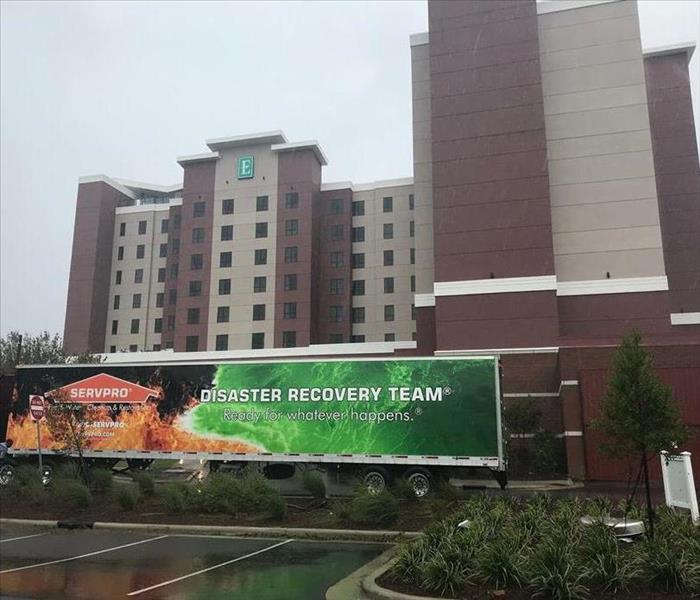 City of Houston and Montgomery County team up with FEMA to provide a flood policy coverage event with NFIP.
City of Houston and Montgomery County team up with FEMA to provide a flood policy coverage event with NFIP.
Houston City Council member Dave Martin announced that on June 19, 2019 the City of Houston in partnership with FEMA will be hosting a NFIP Flood Claims Workshop at the Kingwood Community Center located at 4102 Rustic Woods, Kingwood, TX 77345 from 6p-7:30p.
The workshop is intended for all Houstonians who have suffered flood damages to their home of business in the recent isolated flooding cases.
The event is also intended for community members who have questions about NFIP - National Flood Insurance Program and future policy limits and claim processes.
A FEMA representative is expected to be in attendance to assist in the claims process and provide resources to the community.
The event is being held partnership between City of Houston District E (Kingwood and Clear Lake district) and Montgomery county.
IICRC S500 Standard For Professional Water Damage Restoration
6/11/2019 (Permalink)
SERVPRO of Clear Lake is committed to being the best in the industry. We take restoring your home and business back to its preloss conditions seriously. We know that damages to one of your largest investments can be a stressful time, but we are here to help you get back to normal again.
Our office is dedicated to following the industry standards set by the Institute of Inspection Cleaning and Restoration Certifications. We study and utilize the S500 as the standard guide for performing remediation services.
The S500 provides practical standards and specific steps for water damage restoration. The S500 is a foundation of best practices for proper structural drying and water mitigations ervices. The standard was developed with a wide array of providers having their voice and giving opinions and direction on what the standard practices should be.
Included in these groups were restoration professionals, scientists, trade associations serving the restoration community, chemists, cleaning and restoration training schools and members of the insurance industry.
The IICRC S500 training is a two-part format. The first half is the standard itself outlining the details of the standard restoration process. The second part is the reference guide to better understand the concepts.
For more information on the S500 read the Consensus Body White Paper on Airmover Calculations in Structural Drying Projects.
3 Signs of a Clogged Drain Pipe
1/16/2019 (Permalink)
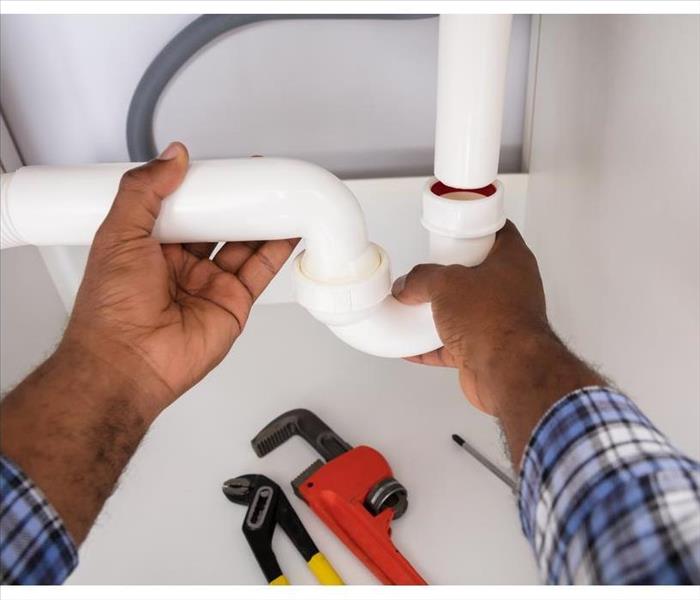 Clogged pipe in La Marque, TX
Clogged pipe in La Marque, TX
3 Signs of a Clogged Drain Pipe
A drain blockage can result in a toilet overflow or cause water to back up in a shower. If a flooded toilet causes water damage, professional sewage cleaning may be necessary. Here are three signs that a drain pipe may be clogged.
1. Toilet Backups or Overflows
A flooded toilet can be one of the first indications of a blocked drain line. If plunging does not loosen a clog, it may be necessary to use an auger or snake. Run the snake down a toilet, or remove the toilet and insert the snake directly into the floor drain. If this does not solve the problem, the blockage may be further down the line.
2. Slowed or Stopped Drains
A slow or stopped drain also indicates a clogged pipe. Slow drains may benefit from drain cleaning solutions. Enzymatic treatments are less likely to damage pipes than chemicals, but work more slowly and must be used regularly. If a drain has completely stopped, it may be possible to use a specialized snake designed for sinks. Otherwise, it is advisable to call a plumber.
3. Toilet Overflow During a Shower
A toilet that overflows during a shower is a clear indication of a blocked drain line. This situation may result in a major backup that necessitates sewage cleaning. A water damage cleanup service can remove standing water, disinfect the area, and recommend which building materials or contents should be disposed of or restored.
All of these issues are caused by a clogged pipe. A homeowner may be able to clear the blockage by snaking a toilet, floor drain, or drain cleanout. It may be possible to use enzymatic or chemical treatments in slow-draining sinks or showers. If efforts to clear a clog are unsuccessful, contact a plumber in La Marque, TX. A sewage cleaning service can restore areas damaged by exposure to contaminated water.
Bathroom Water Supply Lines Do Not Last Forever
12/31/2018 (Permalink)
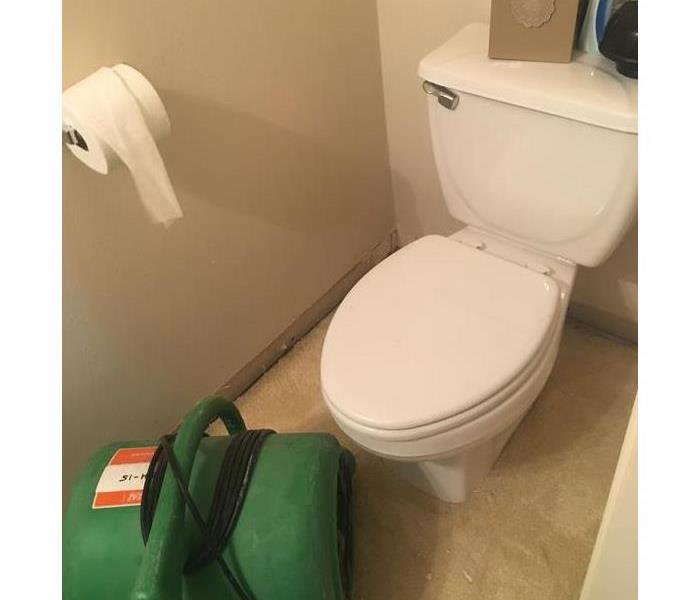 Check your water supply line to avoid water damage in your bathroom
Check your water supply line to avoid water damage in your bathroom
Bathroom Water Supply Lines Do Not Last Forever
All toilet water connections have a hose that connects the toilet to the shutoff valve. Most often, the hose consists of a shiny stainless-steel braid surrounding a polymer tube. It is a masterpiece of simplicity.
- The internal polymer tube contains the flowing water.
- The stainless-steel exterior makes it rustproof and gives it strength.
- The braid gives it flexibility.
It sounds indestructible. Why would we ever be concerned about supply line damage? How could it ever be the source of a bathroom leak?
Your Supply Line May Be Rustproof, but It's Not Immune to Chlorine
If there is a public water supply in Clear Lake,TX, your water is probably chlorinated. Cleaning products often contain chlorine. We all know how it smells. If you pay close attention, you can probably detect a faint smell of chlorine in your bathroom.
The process whereby chlorine causes supply line damage is simple. Cold water passes through the water supply line. Moisture from the air condenses on the stainless-steel and interacts with the chlorine in the air. The result is that the condensation becomes a very mild solution of hydrochloric acid. It may not be strong, but it is eating away at your stainless-steel all day, every day. Eventually, the wires in the braid break and puncture the polymer interior causing a supply line leak.
Replace Your $20 Water Supply Hose and Save Thousands in Repairs
There are no official guidelines for how long your braided water supply hose should last. However, you should consider replacing the supply line if
- You can see discolored areas on the stainless-steel braid.
- You can see or feel broken strands of wire, particularly near the couplings.
- You or your plumber is performing maintenance on the toilet.
Supply Line Damage Is Not Always Avoidable
When your supply line fails, there is going to be significant water damage that needs immediate attention. That’s why you will want to bring in the best water damage remediation specialists available.
Water Damage During Construction
12/31/2018 (Permalink)
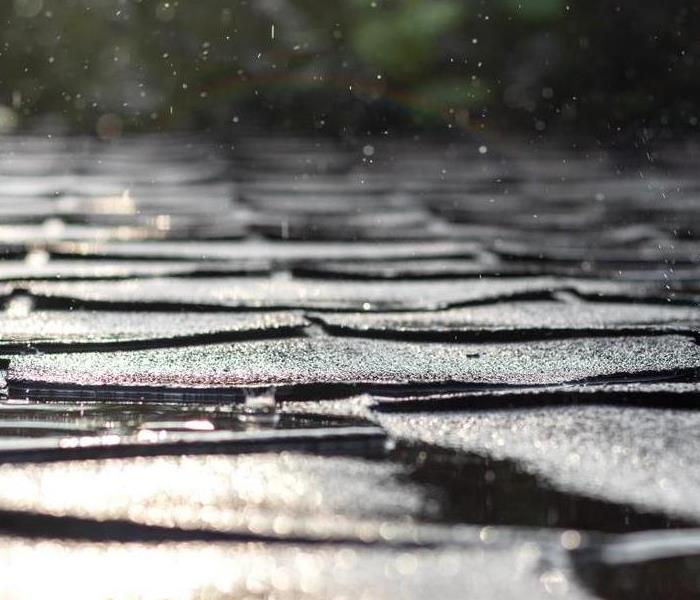 Moisture damage is not fun to deal with, but following the steps above and having a remediation plan in place can help you protect your business.
Moisture damage is not fun to deal with, but following the steps above and having a remediation plan in place can help you protect your business.
Is a construction project in your Dickson,TX, business’s future? You may want to take action to reduce the risk of water damage. If your building sustains such loss, it can lead to expensive consequences like water pipe repair. Effects such as delayed construction or reputation damage can also negatively impact your business. Fortunately, there are some things you can do to help prevent your business from becoming water damaged during construction. Here are three steps you can take to reduce the risk of dealing with destruction.
1. Evaluate Building Materials
Are the materials that your builders are using high-quality? If they are being stored inside during construction, are they properly tarped or covered in plastic? If the wrong materials are being used, there is a greater risk of a mishap occurring.
2. Conduct Regular Quality Checks
Make sure that your building’s waterproofing and plumbing systems are functional throughout the building process. If you find an issue during construction, correct it as soon as possible. For example, if you find a broken pipe, create an emergency plan for water pipe repair.
3. Be Your Own Advocate
If a builder refuses to address a waterproofing or plumbing issue, refuse to pay for the work. You need to know that you can rely on your commercial property to withstand regular water usage without a disaster occurring.
What If Water Damage Already Happened?
If a plumbing issue fell through the cracks during construction and you are now left with a broken pipe or a flooded building, it is time to call in the help of trusted professionals. A water damage restoration company can usually help clean up any damage that is present, and a trained technician can help with water pipe repair.
Tips for Fast and Thorough Water Cleanup
11/7/2018 (Permalink)
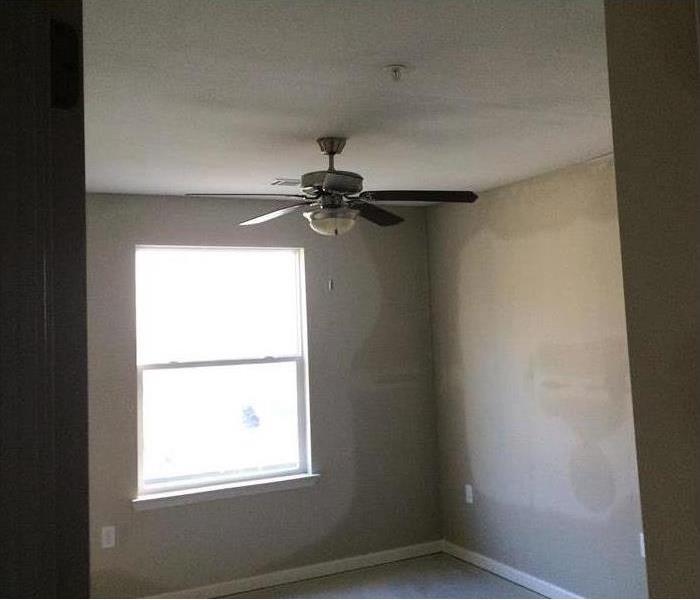 Water damage in room due to supply line breaks in the above bathroom
Water damage in room due to supply line breaks in the above bathroom
Tips for Fast and Thorough Water Cleanup
When you have a flood in Nassau Bay,TX, you need water removal to be fast and thorough since time and temperature have critical effects on water damage. Here are some things you can do fast, while you wait for professional help:
- Stop the source of water, such as shutting off water to a flooded toilet, broken pipes or wayward appliance.
- Begin removal of standing water using pumps, vacuums, mops and rags.
- Begin the drying process by opening windows and doors, and by running fans and your air conditioning, if you have access to electricity.
- Prevent moisture from wicking up into furniture by setting wooden legs on aluminum foil or blocks.
- Salvage important belongings by drying and removing them from the flooded area.
When professionals arrive, expect the thorough part of water cleanup to kick in. You may see them:
- Prevent further water damage from rain by tarping or boarding open areas.
- Completely remove water using high-powered extractors, including truck mounted units and gas-powered equipment for areas where utilities are unavailable.
- Begin removing and cataloging personal belongings for cleanup and restoration.
- Use specialized training and devices to find hidden water.
- Use powerful dehumidifiers and fans for fast and thorough drying which helps to minimize warping of building materials.
- Monitor moisture levels to ensure inhospitable environments for mold growth.
- Protect your structure by removing porous materials that hold water, such as carpet padding, insulation and lower sections of wallboard.
- Use expertise and consideration to help decide what can be salvaged and what should be replaced.
- Restore your home back to its pre-damaged condition.
Being fast and through in the cleanup of water damage prevents subsequent problems. Mold may start to develop in the first couple of days, but professionals can help prevent this with their thorough water removal methods. If mold has already begun, they are also capable of containing colonies during cleanup and prevent further infestation.
Do Storm Floods Always Lead To Mold?
9/25/2018 (Permalink)
 Storm damage in Houston, TX
Storm damage in Houston, TX
As a homeowner in Houston, TX, you try to prepare for any event. When a bad storm leaves your lower levels filled with water, you may feel caught off guard. Thankfully, you can get professional help from a storm damage cleanup crew to ensure your house is returned to normal. Your cleanup experts can also help you understand the risk of mold growth. Storm floods don't always lead to mold, but the following can increase your chances:
- Passing time
- Contaminated water
- Faulty repairs
Find out more about why these circumstances can lead to the growth of fungus.
Excess Time
Standing water does not have to be synonymous with fungal growth; but, if you don't find the flooding right away, you may have a higher chance of the growth taking place. This is because stagnant water can become contaminated. It's also because many mold spores exist naturally in your home. Once the excess moisture is there, it may only take 24 to 48 hours for the spores to start to grow.
Dirty Water
The source of the flood can also affect whether your home has a mold growth problem. Bacteria, mold spores and other contaminants found in stormy waters can allow the fungus to grow even faster than in clean water. This dirty flood may also bring extra spores into your house.
Incomplete Repairs
Fixing water problems quickly is an important part of avoiding mold. If you try to undertake this cleanup on your own, you may miss pockets of moisture. Leaving this excess humidity in your house can create the perfect environment for mold. If you want to avoid this type of growth, you may want to make sure every part of your home has been cleaned and dried out after storm-related flooding.
Not every home filled with storm waters will have mold growth. How soon you start the repairs, the source of the water and the efficiency of the repairs may affect the secondary damage your home has to endure.
Clear Lake Home Health: 5 Tips to Minimize the Damage Caused by Water in your Home
9/24/2018 (Permalink)
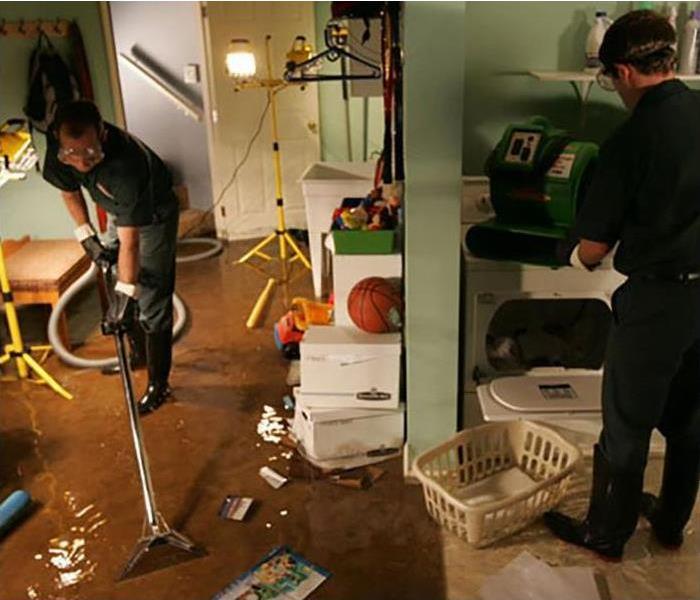 Water Damage Fact: Through SERVPROs timely response and the careful monitoring of water damage, mold and other health issues can be prevented.
Water Damage Fact: Through SERVPROs timely response and the careful monitoring of water damage, mold and other health issues can be prevented.
Water is one of the most destructive elements on earth, and when water ravages a home, the result is substantial damage to the structure and furnishings. Severe storms, a leaky roof, a weeping foundation, an overflowing dishwasher, or a burst pipe in your Clear Lake home can all cause significant water damage, and time is of the essence to minimize the damage. Here are 6 tips that you can take immediately after a damaging water event.
Stop the Water at the Source. If the cause of the water damage in your Houston area home is from a burst water pipe, turn off the water immediately. If the damage is from a roof leak, try to capture as much water as possible in a large pot or garbage can. The more water you can keep from touching your floors, furnishings, and other belongings, the better. If water is entering your home is due to a flash flood or sewage backup, contact an emergency water damage response team immediately. Flood and sewage waters carry debris and harmful bacteria that can cause injury and illness. Your local SERVPRO of Clear Lake stands at the ready to respond 24 hours a day.
Turn off and Unplug all Electrical Appliances. To avoid potential electrocution and further damage to electrical appliances, it is imperative that you turn off and unplug them as quickly as possible. If the water is high in the home due to a flash flood, evacuate the home immediately. All electrical appliances that have been touched by water in your home must be examined prior to use. The SERVPRO team can evaluate these items and help to determine if they are safe for use.
Remove Furnishings from Flooded Areas. Furnishings and personal items that are easily managed should be removed as quickly as possible from areas in the home that have been touched by the water. This will help to speed the process of drying the floors and furnishings while protecting the floors from further damage. When at all possible, avoid walking on wet carpets, and place aluminum foil under the legs of all furniture that you cannot move prior to your local Houston area SERVPRO arrives.
Photograph and Video the Damage. As soon as it is safe to do so, take photos of the water or flood damage in your home. Be sure to take photos of damaged items, and if possible, videos of the water intruding on your property. This step will help your insurance adjuster to quickly process your claim.
Hire a Professional Water Damage Restoration Team. If improperly handled, water in your home can cause significant structural damage, and even dangerous mold infestations. SERVPRO is locally owned, and our team has the training, expertise, and tools necessary to fully restore your home quickly. From water extraction to dehumidifying and drying, through the rebuilding and restoration process, we can help you and your family get back to life pre-water damage.
Don’t underestimate the level of damage that water can do to your home. Call us immediately after a water damage even to your Clear Lake residence. We are the preferred provider for many insurance companies, and can assist you with the process of filing your claim. We are faster to any size disaster and are proud to serve our neighbors and friends throughout our community.
About The Clear Lake SERVPRO
SERVPRO of Clear Lake is faster to any size disaster.
How Professionals Clean Up After Sewer Damage
1/24/2018 (Permalink)
If sewer backup, such as a flooded toilet, has contaminated your home in Clear Lake, TX you may find yourself wondering how in the world anyone could completely clean such a mess. While you should never attempt sewer cleanup yourself, it’s hard for some people to imagine how even a professional could make everything safe again. You can break down this process into four necessary steps:
1. Protect
2. Inspect
3. Remove
4. Repair
Each of these steps has several components that are essential to the cleaning process, and require both knowledge and specialized tools. In the end, you have a home that feels as good as new.
1. Protect
Sewer backup is considered “black water,” which means it is dangerous for humans to touch. It can contain all kinds of bacteria, parasites, and other toxic substances. That’s why the first step in the restoration process is to protect the people in the home and the workers. The professionals may ask you to leave home for a given amount of time. Then, they use protective gear to ensure their own health and safety.
2. Inspect
The crew may take a moment to identify any potential hazards. This step allows them to create a game plan for the sewer cleanup. They may determine that they need the electricity off or that specific structures could become dangerous.
3. Remove
Once they have a game plan, the team can start removing the contaminated water with specific pumps. Then, they remove all unsalvageable materials. This stage may also include a drying period.
4. Repair
With all the contaminated water and belongings out of the way, the restoration crew can begin repairs. This step often includes lots of cleaning, followed by precise rebuilding to bring your home back to its former glory.
Sewer cleanup may seem like a terrifying ordeal, but with qualified professionals in Clear Lake, TX by your side, you can make it look like sewer backup or a flooded toilet never happened. Visit http://www.SERVPROclearlake.com for more information on water damage.
Commercial and Residential Flood Damage
9/26/2017 (Permalink)
Commercial and Residential Flood Damage
Water damage is often a far more serious situation than many property owners would at first realize. Flood damage is often insidious, starting off as a seemingly containable amount of water spilled from a supply line break or pipe break. But this water, even just a few gallons, can quickly begin leading to lasting flood damage. If larger amounts of water in a home or water in a business are allowed to stand for more than about one week, permanent and serious water damage is all but guaranteed to occur. In the worst cases, this can lead to the total loss of the property.
Although it is the most spectacular flood damage events that usually make the news, such as those seen recently with major weather disasters in the United States, the truth is that the large majority of property loss due to water damage occurs as a result of far more quotidian evens, like a supply line break or pipe break. The good news is that these types of flood damage events are almost always able to undergo complete restoration and water damage mitigation. The bad news is that, all too often, home and business owners do not take the proper steps in time to save their flooded homes or flooded businesses from permanent damage.
The single most important thing to remember whenever you find flood water in your home or water in your business is that only trained professionals with the right equipment for the job can maximize the chance of a successful restoration and mitigation of the flooded home or business. Your local restoration company will have both the highly trained personnel and sophisticated, powerful equipment to ensure that your flooded home or business is able to be completely restored to its prior state.
In this article, we look at the mitigation and restoration process and what a property owner can expect when they call in the local restoration company to carry out the water cleanup process. With timely action, nearly every flooded home or business will be able to be fully restored to its original condition.
The call is made and the water cleanup team arrives
The first step whenever a property owner notices flood water in their business or water in their home is to make the call to the local professional restoration company. Once the call is received, a water cleanup team will be dispatched to the property, usually arriving within a half hour.
Once the restoration company team has arrived on site, they will immediately go to the source of the original supply line break or pipe break, making sure that no active leaks are still spewing water. They will also carefully inspect the area around the original pipe break or supply line break, noting the extent to which water has seeped into out-of-site places.
The team will note the amount of standing water in the home or water in the business to determine if large scale water removal with heavy-duty equipment is necessary. If it is, they will already have all the required equipment on hand.
Water removal
The next step in the water cleanup process is the large-scale removal of standing water. Once all standing water has been removed, through the use of heavy-duty vacuum equipment, then the mitigation and restoration process can proceed apace.
The thorough drying of the property
The next step is to carry out a thorough drying of the property. Industrial drying equipment and dehumidifiers will be deployed within the flooded property. The special equipment is capable of heating surfaces to near their flashpoint, thus dramatically speeding up the drying process. This is a step that can only be carried out by professionals. Attempting to dry a flooded home on one's own can be extremely dangerous and will nearly always prove insufficient to adequately dry the premises.
At this point, the property will be restored.
Visit http://www.SERVPROclearlake.com for more information on water damage.
Knowing your home in case of emergency.
9/13/2017 (Permalink)
Knowing your home in case of emergency.
When your home has a flood or fire it is necessary to know where your main shut off locations are for gas and water. No fire is convenient and shutting off your gas may be the farthest thing from your mind. In some cases a kitchen fire will be put out by a home extinguisher. But if the gas is still leaking then it will need to be closed until repairs can be made to the damaged portion of your home.
The same can be said if a pipe were to break in your home. Gallons and gallons of water will be intruding the home filling up basements and destroying property. The time it takes to find the shut off location could be the difference of hundreds of dollars as pressurized pipes continue to spray water into the home.
It Pays to Use a Professional
9/13/2017 (Permalink)
During a flood or water damage in your home or business it pays to use a professional. SERVPRO of Clear Lake has been certified by the Institute of Inspection Cleaning and Restoration Certification (IICRC), a non-profit organization that has standardized the restoration industry. Many insurance companies do not allow restoration companies to mitigate home damage unless they have been certified by the IICRC.
Ongoing training for our office staff and technicians are mandatory to keep certifications up to date. We hold regularly scheduled Continuing Education courses for our employees in order to maintain our certifications and stay up to date on the newest drying and cleaning technologies.
Don’t let any restoration company into your home. Let the professionals of SERVPRO of Clear Lake make your water loss “Like it never even happened.”
The Right Way to Handle a Flooded Residence
7/20/2017 (Permalink)
The Right Way to Handle a Flooded Residence
Water damage is one of the most potentially costly events that can befall a property. Without prompt, professional restoration and mitigation efforts, water damage can quickly begin causing severe and permanent damage to a structure. The proper handling of flood damage includes the use of heavy and specialized equipment that the general public does not have access to. It also involves considerable expertise and requires the rapid and skillful action of professionals. For this reason, the single most important thing that a property owner should do, upon first discovering water in their home or water in their business, is to promptly call their local professional restoration company.
A professional restoration company knows the proven, effective steps that will prevent water damage from becoming a property-threatening condition. Using a prove, five-step process, the local restoration company will send a team of restoration and mitigation experts to the site of the flood damage, immediately beginning the mitigation of the water damage. In this article, we'll take a look at the process that nearly every team of water cleanup experts follow and why it is so important to get them on-site as quickly as possible.
Whenever a supply line break, pipe break or other source of flood damage occurs, it is imperative that the water cleanup process begins as quickly as possible. Your local mitigation and restoration company will have teams of experts, on call and ready to deploy, 24 hours a day. Once the phone call comes in, the restoration team will arrive on site, usually in less than a half hour.
With the restoration experts arrive, they will immediately enter the property and begin assessing the extent of the water in the home or water in the business. If there is an active leak coming from a supply line break or a pipe break, they will locate it and begin corrective action. The original supply line break or pipe break in the flooded home may require the use of welders, pipe cutters or threaders to temporarily stop the leak.
If the water in the home or water in the business has spread to spaces within the floor or within walls, the water cleanup team will be able to detect it by using sophisticated hygrometers and infrared detectors.
At this point, the team will begin the wholesale removal of water from the flooded home. Using heavy-duty pumps and vacuum equipment, all standing water in the home or business will be sucked out. After the first hour of the team's arrival, there should be no water in the business or home remaining.
Next, heavy drying equipment will be deployed within the property. There will be large dehumidifiers set up within the property and large-scale drying devices will be installed near the supply line break or pipe break. The drying process is the part of the cleanup process that generally requires the most time. It may last between a few hours all the way up to an entire day.
Once the home has been completely dried, it will appear almost fully restored. At this point, there will be no further risk of damage occurring to the property.
The final step involves the complete cleaning and sanitization of the property and its contents. This is done to prevent any incipient mildew or mold growth from worsening, as well as to prevent smells, typically caused by the waterlogging of materials, to proliferate.
Using a process similar to dry cleaning, all items, including furniture, pictures and carpeting, will now be restored to their prior state.
Visit http://www.SERVPROclearlake.com for more information on water damage.
What Homeowners and Business Owners Should Understand About Water Damage
6/19/2017 (Permalink)
What Homeowners and Business Owners Should Understand About Water Damage
Water damage is the greatest destroyer of homes, especially the core holding your house, and this, not only invites carpenter ants and termites but also causes the growth of mildew and mold. Here are some highlights on the best ways to prevent water damage the next time heavy storms hit:
Ensure proper drainage
Poor drainage can weaken your house foundation leading to uneven settling of water pathways. To ensure effective drainage mitigation, ensure that you clean the gutters routinely. A cluttered guttered will send water to one side of the house, damaging the foundation and siding. Also, ensure that the drop-out fall is not less than 10 feet away from your house. Additionally, your yard should slope six inches on a ten-foot span from your house foundation, and with such a restoration measure, you reduce the risk of flood damage or water in your home.
Conduct regular sump pump tests
A sump pump is used during stormy periods. Therefore, conducting yearly checks act as a mitigation factor to flood damage. When performing the pump check, you need to fill the pump with water and take note of the "float" until the water level falls. The same procedure applies to the backup pump, but you need to ensure that it's plugged from the main pump. For those who might not have a backup pump in the case of water in business, it's important to consider those that run on water pressure.
Check for water leaks and fix them
Persistent leaks of water in homes provide a perfect environment for the growth of mildew and mold. Therefore, with effective restoration measures and proper drying procedures, you shouldn't experience a long-term damage. To ensure effective leak mitigation, start by looking for dark spots under cabinets or inside sink pipes. Also, conduct a yearly routine restoration inspection on your roof to repair cracked caulking and damaged shingles to mitigate water damage before it occurs.
Ensuring effective water cleanup
If water gets to unwanted places, it can lead to flood damage, which not only ruins your belongings but also the entire house. With effective mitigation measures such as cleanup and drying, the damage done to your prized possession can be minimized. In the business setup, water in business shouldn't be taken lightly given that it leads to mold growth which can ruin your business floors and walls. Here are some of the ways to clean after water damage:
Switch off power supply and disconnected electronics
The faster you get your items out of a flood damage resulting from water in business, the higher the chances of saving them. When undertaking water cleanup, start by moving the electrical items. Pull out the carpet, especially the wall on wall carpet and get it cleaned and disinfected. This is the first and most important restoration measure to get you up and running.
Get rid of the water
There are different ways to undertake water cleanup and drying. For instance, if you do not have power or you are worried about using power for the cleanup exercise, then the manual way will work just fine. Try using mops, buckets, and old towels, and if your sewer lines aren't blocked, then you can pour it down the drain. Also, consider using dry or wet vacuum when getting rid of water in the home, and if you do so, it should be plugged far away from any water source.
Dry the affected areas
When it comes to getting rid of water in business, consider using dehumidifiers and fans to ensure proper drying of the affected areas. Once the water cleanup exercise is done in the basement and you find out that the drywall is massively affected, you should consider cutting away areas affected by water in the home. This is because drywall can easily crumble with the paper backing and provide a perfect environment for mold growth.
Visit http://www.SERVPROclearlake.com for more information on water damage.
What You Need to Know About Water Damage
5/22/2017 (Permalink)
What You Need to Know About Water Damage
Flooding of water in one’s house can be a devastating experience. The same applies to flood water in business. The hustle associated with removal of the water and getting items back into place can be both an overwhelming and frustrating experience. The worst comes after removal of water. Materials, after water in home or water in business flooding, ‘get sick.' Wooden items may rot, mold may grow on others, steel may rust, and materials such as plywood may warp among many other damages. To grasp the extent to which water in home or water in business can affect your home and material, a sneak peek at the categories of water sources causing flood damage, and its classes are worth understanding.
Water sources causing water damage can be categorized into:
a) Category 1 Water: This is a source whose water does not pose any threat to humans. In other words, it is clean water which may come from broken water supply lines or overflows from tubs and sinks.
b) Category 2 Water: The source of category 2 water contains significant amounts of contaminants; chemical, physical or chemical. Exposure to this water may cause discomfort or illness. Referred to as gray water, this water may come from toilet bowls with urine, water discharge from dishwasher and washing machines and sump pump failures among others.
c) Category 3 Water: commonly referred to as black water, this water contains harmful microorganisms and unsanitary agents hence causing severe discomfort or illness when exposed to it. It includes water sources from sewage, flood water, seawater or standing water. They are basically contaminated water sources that affect the indoor environment.
Understanding the classes of water or flood damage is important as it helps one to internalize the extent of damage caused by the water and the mitigation or water cleanup measures to take. Class 1 majorly affects materials with low permeance meaning a very minimum amount of moisture is absorbed by the materials. Water cleanup and mitigation is thus not intensive. Class 2 water damaged is declared when the water has affected and an entire room of carpet and cushions. The water may have wicked up the walls but not higher than 24 inches. Water cleanup or mitigation, in this case, is more intensive as it requires a fast rate of evaporation methods as a mitigation measure to restore the materials. When water comes from overhead, the overall effect is walls, ceilings, and insulation, cushion and floor damage. This water damage is classified under Class 3. Class four generally involves water damage to hardwood floors, concrete, crawlspace and any other material with a very low permeance or porosity. Class 4 water damage require special drying and water cleanup to rid the surfaces of all the water to avoid future floor damage.
Whether faced with water in home or water in business premises, it is important to contact the nearest drying services. In as much as we may be able to assess the extent of damage with a simple sweep of the room and counting the number of items that are drenched in water, drying services are experts when it comes to restoration after water in home damage.
Restoration is a process that involves extensive procedures which if done by a person who is not qualified, the damaged materials may actually be lost forever. Water or flood damage restoration is prefaced by a loss assessments as well as an evaluation of affected materials. Drying services will then inspect the damaged area with water sensing equipment so that they can determine the source of the water or flood damage in addition to the possible extent of the damage. Thereafter, depending on the amount of water and how long the materials have been in the water, they use the best methods and measures for water clean-up and restoration. The result is avoiding of losses from things such as floor damage and material rot.
Visit http://www.SERVPROclearlake.com for more information on water damage.
Four Signs You Might Need a New Water Heater: Clear Lake Safety Tips
2/17/2017 (Permalink)
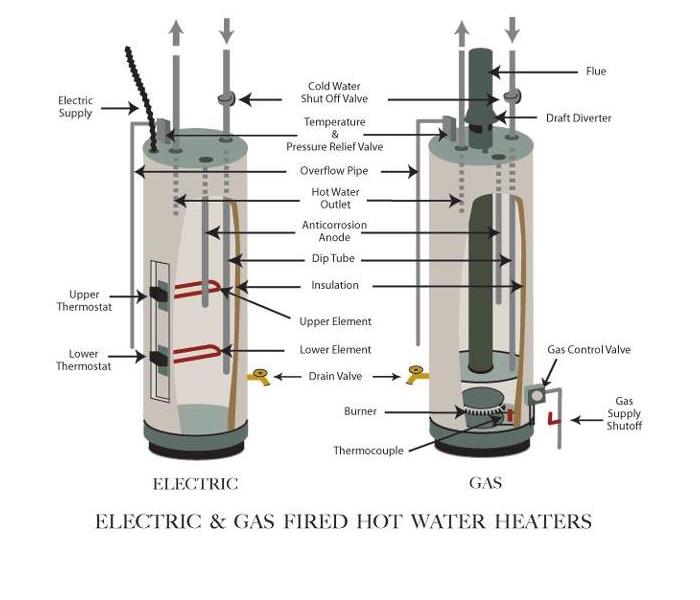 Know the parts of your water or gas water heaters.
Know the parts of your water or gas water heaters.
Four Signs You Might Need a New Water Heater: Clear Lake Safety Tips
Hot water is sometimes a luxury (bubble baths and long showers) and sometimes a necessity (laundry and clean dishes). So, when a water heater fails or ruptures, it can leave you in the cold as well as causing thousands of dollars in water damage to your home or business. In the event your property is flooded or damaged, it is imperative that you seek a reliable and well-respected flood water restoration company to remediate the damage.
Here are the top 4 signs you might need a new water heater:
- Rust around the base of the water heater. A common sign that your water heater is leaking is rust around the base, on the floor or near the drainage tap. This means the base is compromised. Even if there isn’t any visible pooled water, there could be a very slow leak that is causing the rust and if so, it won’t be long before the bottom of the unit totally fails and you get a flood of hot water.
- Unusual noises. Hot water heaters and tanks that make knocking noises, creaks, whines or bangs should be examined and assessed by a plumber as quickly as possible. These annoying and often loud noises could be a sign that the heating element is struggling to keep up with the demand. If you live in an area with hard water, which is much of the Houston area, it is possible that there is heavy sediment at the bottom of the tank keeping the water heater from performing optimally. If so, a thorough flushing of the system should correct the problem. However, if left untreated, it is possible for the heating element to fail or burn out.
- Fluctuating temperatures. Of course, if you are experiencing water that is too hot or not hot enough, your water heater may need to be repaired or replaced. Broken heating elements or gas thermocouples are often to blame when the water doesn’t get hot, and those can be replaced without replacing the entire unit. However, if you are already having work done to your water heater, have the tank itself checked for cracks, fissures or other signs of weakness. These could cause a tank failure, resulting in a flood in your home or business. The cost to replace your water heater now could end up being cheaper in the long run.
- Tankless water heaters can also cause water damage. Tankless water heaters are becoming more popular, but don’t think that just because there’s not a tank of water connected that you can’t experience massive water damage. Check the couplings and the hoses at least once a year to ensure everything is still working properly. If you are going out of town, you might consider turning it off all together, as the emergency couplings can sometimes fail. And as with a regular water heater, look for signs of leaking such as rust, dampness and changes in water temperature.
SERVPRO of Clear Lake sees hundreds of properties each year affected by failed water heaters. Often kept in the attic, garage or water closet, when units fail and cause a flood, it’s usually personal items, family heirlooms and photos that are damaged. Fortunately, our highly trained professional technicians have the experience and tools necessary to clean up the water damage properly and bring your home and personal belongings back to pre-flood condition.
For emergencies and other situations, call 281-219-8180 anytime to reach your area flood damage experts, SERVPRO of Clear Lake. We help residential and commercial property owners when natural disasters, water damage, sewer backups, floods, mold infestations, fires and other events happen.

 24/7 Emergency Service
24/7 Emergency Service






























